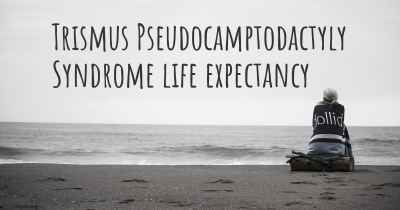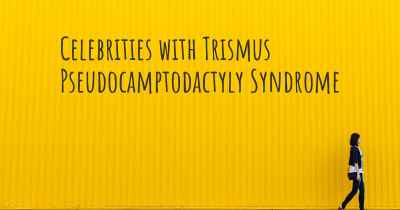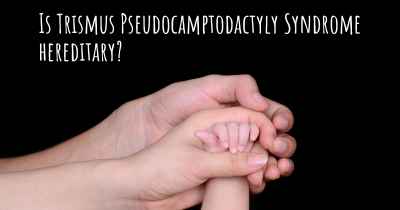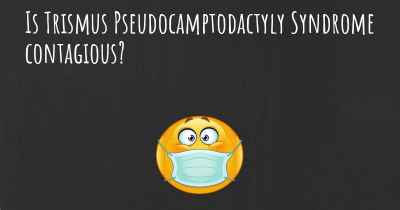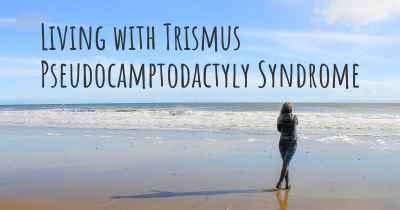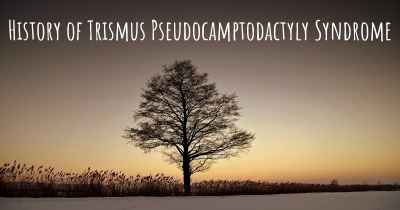16
ICD10 code of Trismus Pseudocamptodactyly Syndrome and ICD9 code
What is the ICD10 code for Trismus Pseudocamptodactyly Syndrome? And the ICD9 code for Trismus Pseudocamptodactyly Syndrome?
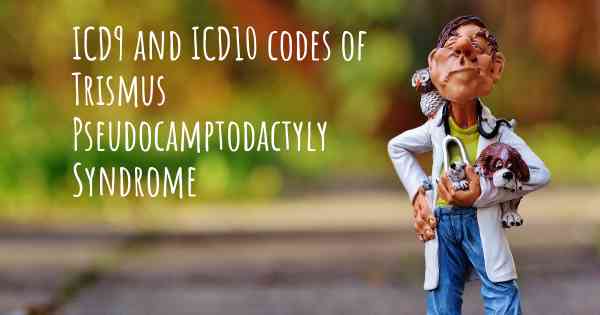
Trismus Pseudocamptodactyly Syndrome is a rare genetic disorder characterized by restricted mouth opening (trismus) and fixed flexion deformity of the fingers (pseudocamptodactyly). The ICD-10 code for this syndrome is Q68.8. Unfortunately, there is no specific ICD-9 code for this condition as it was replaced by ICD-10. It is important to consult with a healthcare professional for accurate diagnosis and appropriate management of this syndrome.
Trismus Pseudocamptodactyly Syndrome, also known as Hecht-Beals syndrome, is a rare genetic disorder characterized by the combination of trismus (limited mouth opening) and pseudocamptodactyly (a condition where the fingers cannot be fully extended). This syndrome is inherited in an autosomal dominant manner, meaning that an affected individual has a 50% chance of passing the condition to their offspring.
In terms of coding, the International Classification of Diseases, Tenth Revision (ICD-10) provides a specific code for Trismus Pseudocamptodactyly Syndrome. The ICD-10 code for this condition is Q87.8, which falls under the category of "Other specified congenital malformation syndromes affecting multiple systems." This code is used to identify and classify this particular syndrome in medical records and insurance claims.
On the other hand, the International Classification of Diseases, Ninth Revision (ICD-9) does not have a specific code for Trismus Pseudocamptodactyly Syndrome. However, it is important to note that ICD-9 is an older coding system that has been largely replaced by ICD-10 since its implementation in October 2015. Therefore, healthcare providers and insurance companies primarily use ICD-10 codes for accurate and detailed documentation of medical conditions.
In conclusion, the ICD-10 code for Trismus Pseudocamptodactyly Syndrome is Q87.8, while there is no specific ICD-9 code for this condition due to the transition to the newer coding system.
In terms of coding, the International Classification of Diseases, Tenth Revision (ICD-10) provides a specific code for Trismus Pseudocamptodactyly Syndrome. The ICD-10 code for this condition is Q87.8, which falls under the category of "Other specified congenital malformation syndromes affecting multiple systems." This code is used to identify and classify this particular syndrome in medical records and insurance claims.
On the other hand, the International Classification of Diseases, Ninth Revision (ICD-9) does not have a specific code for Trismus Pseudocamptodactyly Syndrome. However, it is important to note that ICD-9 is an older coding system that has been largely replaced by ICD-10 since its implementation in October 2015. Therefore, healthcare providers and insurance companies primarily use ICD-10 codes for accurate and detailed documentation of medical conditions.
In conclusion, the ICD-10 code for Trismus Pseudocamptodactyly Syndrome is Q87.8, while there is no specific ICD-9 code for this condition due to the transition to the newer coding system.
Diseasemaps
